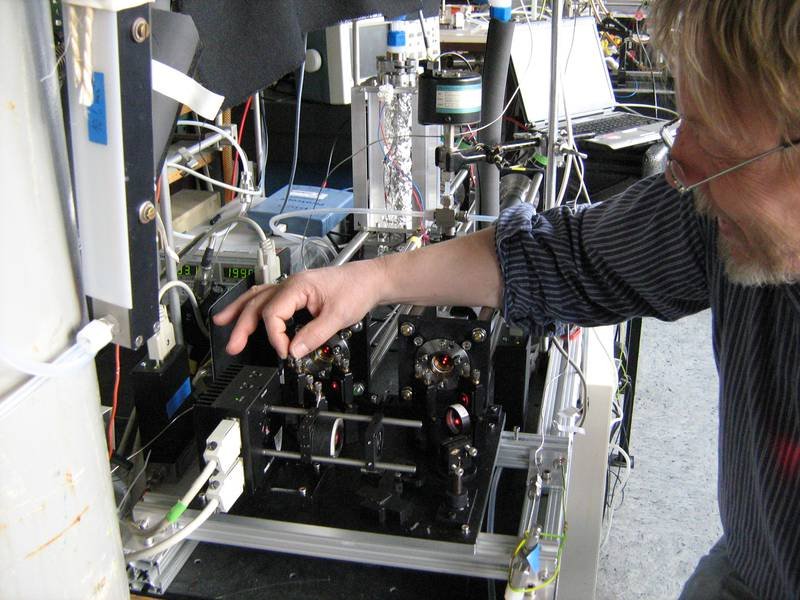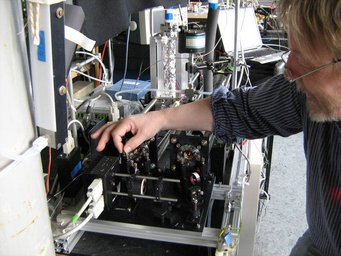Reactive Processes
Research Group Dr. John Crowley

Our atmosphere may be thought of as a giant (photo)chemical reactor, with an enormously complex set of gas-, liquid and multi-phase processes taking place in a highly variable environment with temperatures between –80 and + 30 °C and pressures varying by a factor of ~100 between the surface and ~20 km altitude. In the gas-phase, chemical kinetics and photochemistry dictate how trace gases interact with sunlight, which trace-gases react with each other, how rapidly they react and which products are formed. Heterogenous chemistry refers to the chemical and physical processes taking place at the gas-particle interface, where the particle may be liquid, solid or frozen and vary in complexity from almost pure sulphuric acid to a mix of many condensed organic molecules. Both gas-phase and heterogeneous processes play key roles in defining the composition of our atmosphere.
The laboratory work of the “reactive processes” research group is directed towards a detailed understanding of gas-phase and heterogeneous processes that take place throughout the atmosphere. Using state-of-the-art experimental set ups with optical and mass-spectrometric methods (see Methods section) we investigate the photochemistry, kinetics and mechanisms of atmospheric reactions to derive a physical-chemistry based parameterisation that can be incorporated in atmospheric models.
In the research group's field measurements we deploy highly sensitive laser-cavity methods and chemical ionisation mass spectrometry to investigate various aspects of atmospheric nitrogen-oxide and halogen chemistry. By measuring several trace gases: NO2, NO3, N2O5, PAN, HNO3, alkyl nitrates, ClNO2, HCl and SO2, we further our understanding of the coupling between reactive nitrogen oxides and their reservoir species and thus their role in photochemical ozone generation. The instruments we use are described in the Methods section. The instruments we use are described in the Methods section.
